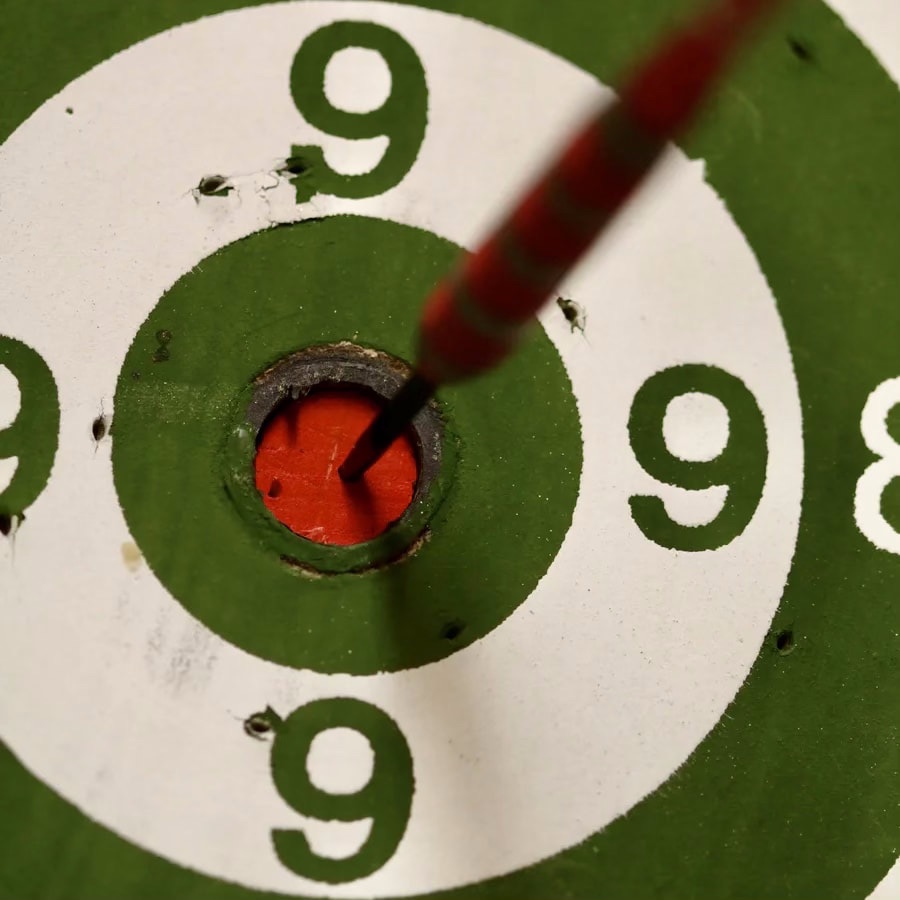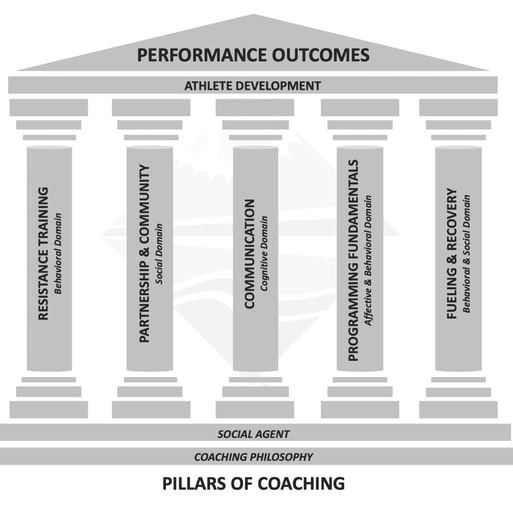|
Here’s a fun perspective check that I was reminded of over the weekend while chatting with Chris Johnson (@chrisjohnsonthept), my mate and business partner. See how you do.
Did you score 100%, able to recall each of these individuals and their accomplishments? Okay, fair enough… that’s a hard ask. How about these next few questions?
A bit easier, right? As aspiring as wealthy, affluential, best-in-the-world individuals and athletes are their accomplishments and headlines are fleeting. By every measure of success it is easy to say “wow, they’ve made it.” But have they? I don’t know about you, but I have profound respect for and am in awe of those who have fostered life-long friendships vs. accumulated 10k+ followers on social media… …or have relationships and marriages that have withstood multiple ups and downs… …and have families with whom they love to spend time with and who love spending time with them in return… …who give back to their communities and neighbors through intentional, and often selfless, acts of kindness… …or have continued to swim, bike, run, lift, and improve their overall health and wellness in spite of a 1.5+ yr global pandemic and canceled races… and the list goes on. The pursuit of excellence in business, athletics, the arts or any other sector of life is noble and good. But the most influential people in my life are the ones who care the most about the well-being of me, my family, and those in their community. They don’t always make the most money, have the most fame, accumulate the most followers, go top 3 AG every race, or achieve the greatest accolades. But from my point of view they are the most successful people I know. (Ref. lectures by Terry Small, “The Brain Guy")
0 Comments
On a recent early morning run, surrounded by fog and cooler temps, I found myself thinking about the changes that have occurred personally and professionally over the past several years. Enter “REFLECTION”. Aside from being a buzz word in most professional education programs, Mark Twain perhaps identifies it most simplistically - “Reflection is the beginning of reform.” It is not a ‘one and done’ process, but rather an intentional and continual process of evaluating actions and outcomes to better understand future experiences. As John Dewey noted in 1938… “To reflect is to look back over what has been done so as to extract the net meanings which are the capital stock for intelligent dealing with further experiences.” What then has reflection got to do with coaching and how has ‘extracting meaning’ from past experiences impacted my coaching present day? In short, I’ve realized that successful athletic development and attainment of long-term success boils down to 5 pillars.
These ‘pillars of coaching’ provide a structured approach to athlete interaction, development, and training execution, complimenting and reinforcing as opposed to superseding or taking precedent one over another. Finally, the coach must also transition away from the role of “operator” and towards one of “educator”. Make no mistake about it – 2020 has challenged the conventional norms of coaching. Races have been canceled; in many places, gyms remain closed; social distancing is straining our idea of ‘community’. We are collectively being forced to reflect and adapt.
The coaches and athletes who are taking actionable steps right now to answer these questions and position themselves for success over the next year (and more importantly the next 5-10 years) are those who will be primed for personal and professional achievement moving forward. Wishing you and yours a happy and healthy holiday season and a calm mind amidst the ever-evolving COVID climate. If you’re interested in learning how these pillars impact the interactive process of coaching join Chris Johnson (@zerenpt) and me on Dec. 5th for a master class on “Mastering the Master Runner”.
We had initially opened the course to 50 seats, but after that sold out in less than a week, we decided to open an additional 10 seats. Given the initial overwhelming interest we know these last few spots are going to go quickly. We would love to have you join us! Sign up here. Chris and I are excited to see you on December 5th as we unpack the injury to performance spectrum of the master runner. I’ve hesitated to put pen to paper, or in this case keys to text, for a while now. It’s not that I haven’t had thoughts or opinions. Instead, I’ve realized how unique and individual each situation is…while we are all “in this together” and experiencing the challenges of COVID-19 our individual lives and demands (read: family, work, life) look vastly different. And that makes it hard to suggest, with broad generalities, a tactic or pattern of thought by which to approach training within this “new normal”. I find myself cringing each time I see a broad-brush stroke espousing an easy fix or solution. However, social distancing guidelines, postponed or canceled races, gym closures and the like are not going anywhere for the foreseeable future. So now what?
Allow me to make three suggestions: 1) gain perspective; 2) intentionally reflect; and 3) purposefully invest. Interested? I hope so – keep reading… Gain Perspective None of us were born at the beginning of the 20th century; however, if you were here’s what you would’ve experienced.
And while these events were all global, with far reaching impacts, they leave out all of the local, regional, and national events that also shaped the collective history and life experience(s). Are you starting to see the trend? Obstacles, challenges, suffering – it’s all unavoidable. It’s part of life. We live in a broken world, and while technological, scientific, health, educational and many more advances have significantly improved aspects related to our quality of life one truth remains – life is not easy. So, with that in mind what’s the next step? Intentionally Reflect When I was growing up I got into trouble a fair amount. Whenever this would happen my dad would say, “I hope it was worth it.” Though it rarely was, this statement was his way of asking, “Does the cost vs. benefit analysis make sense?” In short, he was encouraging me to reflect. Reflection, critically thinking, and analyzing is an important part of our day-to-day lives. And, unfortunately, something that is less and less common. We are far too reactionary, impulsive, and immediate in our interactions and thoughts. Life is not analogous to Amazon Prime or next day delivery. Perhaps one benefit which has come out of the “work from home” and “social distancing” measures is being forced to slow down a bit, which in turn has allowed me more time to think critically. Perhaps you’ve noticed the same. But how does this relate to training, performance, and our “new normal”? Critical reflection has allowed me to better understand and define my “why” for training. Sure, the races have always been a nice icing on the cake…a proving ground to see how I compare or stack up against the competition (e.g. AG ranking, AWA status, etc.). But that’s just it – it’s always been the ‘extra’ and not the main course. So why then have I continued to train long past collegiate athletics…why do I spend the long hours away from family…why do I set my alarm clock for an early morning session? Glenn Cunningham says it best: "People can’t understand why a man runs. They don’t see any sport in it. Argue it lacks the sight and thrill of body contact. Yet, the conflict is there, more raw and challenging than any man versus man competition. For in running it is man against himself, the cruelest of opponents. The other runners are not the real enemies. His adversary lies within him, in his ability, with brain and heart to master himself and his motions.” You see, at least for me, it has never been about the races or external motivation. Instead, it’s always been about the daily battle – me vs. me. And here’s some good news. I can wage that battle day in and day out regardless of an epidemic, pandemic or outbreak. Sure, the races are awesome, and I’ll be one of the first to start planning my race calendar when safe to do so. But for today, tomorrow, and next week I’ll still be training (physically, nutritionally, mentally, emotionally, spiritually), and I’ll still be working to improve 1-2% over who I was yesterday. (2 Cor. 4:16-18) And here’s the bonus – all those miles logged, pounds lifted, sets and reps completed is a heck of an investment both in my personal health (direct) but also in the example it may set for my family and friends (indirect). One thing’s for sure, “work from home” has allowed my kids to see exactly how I budget my time (suggestion 2a: if you have kids involve them – here’s a crazy 50 lb. sandbag we built together. Makes a great training tool if you’re short on weight), and on what, how, and where I’m invested. Which brings us to our final suggestion… Purposefully Invest First things first, while I’m not going to offer financial advice I am going to borrow a parallel from the financial world. Endurance and performance training are not too different from your 401k, Roth IRA, or any other investment account or portfolio you’re maintaining. To have success in the financial markets knee jerk reactions and unexamined decisions typically do not work in your favor. In fact, they tend to do the exact opposite, resulting in loss and disappointment. What takes months, years, and decades to accumulate in financial wealth can be lost in seconds due to reactionary decisions. Additionally, it can be incredibly challenging to make the monthly or quarterly contributions to your accounts knowing full well you’ll not be able to reap the rewards for years, or even decades, to come. So why even do it? Consistent investments yield long-term rewards. Period. Compound interest is a heck of a benefit but helps only minimally when deposits are made in a herky-jerky or ‘all at once’ fashion. There’s just no substitute. And so to for endurance and performance training. There’s no substitute for making that daily tally. Physical adaptation takes time and cannot be rushed (though often is attempted through PEDs and ulterior means). You’ve got to daily commit to the process of refining who you are in order to lay the foundation that leads to where you want to be. Looking forward to racing again? Already planning your race calendar for 2021 and beyond? Then right now is the perfect time to purposefully invest! Get rid of the excess, the things that continue to waste your time. First things first, second things not at all. Start today by taking ownership of your time. Doing so, along with the minutes and maybe hours saved from commuting, will allow you to invest about one hour daily, at minimum, to improve who and what you are. And remember, training is multidimensional. Focus not only on your physical development but also your mental, emotional, spiritual, and nutritional development, to name a few. And, if finances allow, make a few investments from the dollars saved from race registrations and travel expenses. Work with a performance coach who can help you begin to establish the habits and healthy structure to training you’ll need to reach the next level, or invest in weights and a structured plan to improve capacity and build strength. Seek to minimize or eliminate all together that which antagonizes who and where you want to be. Whatever your goal is for the future – health, wellness, performance, AG ranking, BQ, Kona qualification… Now may be the best time to gain some perspective, renew your commitment through intentional reflection, and purposefully invest for the future. Life is not easy – never has been and never will be. Training is not easy – never has been and never will be. But isn’t that ultimately why we do it? ___________ To those on the front lines, those in our hospitals and healthcare facilities – thank you for your work and dedication. Wishing you all health, wellness, and fruitful training. “I’m just waiting to find an expert coach. You know, one who can keep me from dealing with all these injuries.” This phrase was part of a conversation a few weeks ago with a potential client who had contacted me to inquire about my background and philosophies in performance coaching. Since that conversation I have not been able to let this phrase go. Over the next 2 weeks I want to break this down into 2 parts: 1) what is an ‘expert’ coach, and 2) can ‘expert’ coaching prevent injuries. So, let’s start with the obvious question – what is an ‘expert’ coach? To do so, we first have to break it down and understand the concept and historical context of ‘coaching’. McNab (1990) and Lyle (2005) provide the historical context of coaching, beginning with ex-university athletes in the 1800’s, who had developed some experience and prowess within their specific sport(s), later becoming educators and thereby imparting their athletic knowledge on their younger students. In addition, Lyle (2005) notes that some early coaches were also former professional athletes who utilized their intimate knowledge of sport to educate (i.e. coach) others. This early process, extending from the 19thcentury onward, is commonly referred to as the ‘diffusion of sport’ and the beginning of formalized coaching. Using this background knowledge, along with the emergence of ‘coaching’ as a profession in the 1950’s in Britain and beyond, we can begin to appreciate the close relationship between ‘education’ and ‘coaching.’ In short, Lyle (1997) offers perhaps the best understanding of coaching. “Coaches existed to train those who competed or exercised…[and] with the emergence of physical education…a strong relationship between education and sports coaching evolved.” Secondly, we need to better appreciate the definition of an ‘expert.’ Mark Twain once offered his take on experts, in his characteristically pithy manner, noting, “An expert is one who knows more and more about less and less until they know absolutely everything about nothing at all.” Let’s hope this is not the expert coach in question, though Twain may be closely analogous to the Dunning-Kruger Effect. This idea of ‘expert’ is still worth considering. What is an expert? How do we know when someone has achieved expert status? What qualities, characteristics, or abilities contribute to one’s expertise? Is being an expert coach even possible? Sure, we could consult Webster for the textbook definition. However, I would propose that an ‘expert coach’ is a bit of an illusory term. The very nature of coaching stands in opposition to this idea of expertise. In short, no one is an ‘expert coach’. Huh? How is this even possible? Surely, we can agree that Jack Daniels, Percy Cerutty, Bill Bowerman, Dave Scott, Mark Allen, and others are experts, right? Nope. And here’s why. Coaching is a practice, inherently marred by failures and shortcomings. Even some of the best coaches in endurance sports are not or were not experts. Instead, they remained students of their sport throughout their coaching careers. Sure, you can argue that some are or were more advanced along the continuum of experience and practice, while others are just beginning, but the title of ‘expert’ alludes nonetheless. And it is this role as ‘student’, with the insatiable curiosity that accompanies, which contributed to their undeniable success and the success of the countless athletes they coached [read: educated] and in turn were coached by. Bill Bowerman once noted, “A teacher is never too smart [read: or too much of an expert] to learn from his pupils.” No matter how much we know about athlete development, phases and cycles, physiologic determinants, and on and on there is always more to know. Let us assume for a moment you understand the precise principles of periodization theory and its application in running. (Though Kielymay disagree with you…) Bravo. But how will you apply them with your 38-year-old runner who is managing work, family, social, sport, and recreational demands on a fluctuating schedule of 5-10 hrs. of training available per week? Often what you do not know is more important than what you do know. We, like they, are students. Assuming the role of ‘student’ is challenging. But in doing so, we progress our understanding of coaching, programming, and training progressions. We show up daily and work to be better than the day before. Hmm…sounds like a pretty good analogy for life, sport, and most things in general. Perhaps Mark Twain can again provide us some guidance: “What gets us into trouble is not what we don't know. It's what we know for sure that just ain't so.” Coaching is a reflective process, continually challenging and refining our philosophies and processes, resolving inconsistencies, in order to develop and advance both our own understandings as well as our athletes’ successes. No one is an expert in coaching because coaching is an ongoing pursuit towards excellence – a lifelong practice of curiosity and humility. With this enhanced perspective we can better appreciate the challenge of finding an ‘expert coach.’ Perhaps this too remains illusory. Or perhaps it could serve as a great starting point for further discussion. Stay tuned for Part 2 next week – Can an ‘expert coach’ prevent injuries. Wishing you health, wellness, and productive training. Thanks for reading! Looking for a coach? Contact us to learn more. We welcome the opportunity to get to know you and your unique needs and concerns better. I am grateful for the opportunity to work with some of the best coaches in endurance and performance athletics. Want to learn more about the collaborative work we do? Head to Zeren PT & Performance to learn more about the all-star team we've assembled.
The beginning of the New Year provides athletes and coaches alike an opportunity to reflect on the previous year’s training and racing, reliving the successes and struggles of maintaining consistent, healthy, and productive training. As Strava and other social platforms publish their ‘year in review’ summary of miles, elevation gain, and accomplishments athletes often begin to ask what will give them the added leverage they need to realize a goal in the upcoming racing season. While each individual has various demands upon their time and ecosystem, common underlying habits emerge that help to separate those who seem to struggle through training and racing and those who seem to achieve their outlined pre-season goals, grabbing a few PR’s and AG placings along the way.
1) CONSISTENCY Arguably, one of the greatest predictors of success vs. failure is the ability to establish and maintain a pattern of consistent training. All too often, athletes miss workouts, scrambling to make up miles and time by going longer and harder in subsequent workouts. Random, poorly planned training load and miles quickly erode the foundations for success. Regardless of changes in schedules and time demands all of us adopt habitual patterns. From the morning cup of coffee or checking emails and social media as soon as we wake up to our daily run or lifting session… all of us have a combination of beneficial and potentially harmful habits which guide our activity and productivity throughout the day. Constructively thinking of ways to establish frequent and consistent exposure to training increases your chance of establishing a productive habit. And the more you do it the harder it is to break – use this to your advantage. Waking up 30 minutes earlier, or watching the latest Netflix show while completing your trainer ride may help you to optimize your time, establish a habit, and maintain consistency of training. The best way to break up a bad habit is through graded exposure to a new, intentional action. 2) FOCUS When working with the athletes that seek our services one common theme emerges – life is stressful and, at times, chaotic. However, you would never know this from the outside looking in for many of our most successful and efficient athletes. They are calculated and focused on their daily, weekly, and monthly goals, handling the task at hand and allowing tomorrow to worry about itself. This does not mean they are not dealing with busy work or family schedules, traveling to and from appointments or after school activities, or dealing with last minute changes. Instead, they handle the chaos by effectively communicating to their network of supporters (coworkers, family, friends) around them, ensuring their own priorities, and the priorities of their supporters, are being met. You can either control the time you have well or your perceived lack of time will control you. Athletes who are focused on the task and goal at hand, regardless of life circumstance(s), maintain life balance and improve their resiliency to stress. 3) PATIENCE An equation is often used to illustrate the ‘magic’ formula for success in endurance athletics. It is: 7 x 52 x 10 – 7 days a week, 52 weeks a year, for 10 years. The theme? Committed patience. Physiologic and neuromuscular adaptations do not happen overnight or after a few weeks of consistent training. Are you trying to figure out why your race did not go well despite having 6-8 weeks of solid build prior to race day? Consider looking at the 10-12 weeks prior or go back even further. How consistent has your training really been? Are you fully focused and committed to the task at hand? Training does not have to become an all-consuming aspect of day-to-day life, where all else revolves around your workout schedule; however, if your desire is to be highly effective it requires careful planning, critical thinking, communicating with your supporters and/or coach, patience and trust in the process. Percy Cerutty perhaps put it best when he remarked, “Hard things take time to do. Impossible things take a little longer.” 4) STABILITY While life is undoubtedly stressful and chaotic, changing at a moment’s notice regarding time demands and deadlines, establishing a stable foundation is a strong defense in weathering the storm around you. Stability fosters success. What anchors do you have or can you develop to better stabilize and hold you fast? Perhaps it is as simple as discussing the approaching week’s schedule with your family, significant other, or supporters. Or perhaps it is prepping meals and post-workout recovery snacks on the weekend in advance of the busyness and chaos of the work week. Whatever steps you can take to promote efficiency and consistency will directly improve the stability of your day-to-day interactions. 5) SELF-AWARENESS This time of year, sickness, in the forms of cold and flu, are inevitable. Add to that the various life-stressors we encounter on a day-to-day basis and it is easy to appreciate the challenge of maintaining a consistent and focused training schedule. However, athletes who are self-aware have an ability to reflect on possible circumstances that may impede their ability to train, and they communicate this information in a constructive and proactive way to their coach and those around them, problem solving and creatively planning to maintain consistency and exposure to training. Perhaps you can relate to the following situation – an athlete has a hard 75-minute run with 6x 4-minute interval session on Wednesday, but they are struggling to maintain their health due to having 2 kids with colds and a project at work due on Friday morning. So, what would you do? Many individuals may just put their head down and try to push through. However, all too often the result is they miss the workout all together, complete only part of the planned duration, or they pull back on the intensity as they struggle to get through the session. Instead of accomplishing a polarized model of training, all their workouts begin to the look the same as they struggle to find the time, energy, and will to push beyond their plateauing fitness. The self-aware athlete intuitively recognizes the potential for an immune system setback and reduced time availability and communicates with their coach, working to identify an approach which fosters continuity of training while taking into consideration the total stress on their system. 6) HONESTY Arguably one of the most common laments regarding missed workouts and poor training consistency is, “I just don’t have time.” Stop for a moment. How honest are you being with yourself? Every day is 24 hours…no more and no less. What’s your time worth to you? How efficiently are you utilizing your time? “You have to decide what your highest priorities are and have the courage - pleasantly, smilingly, non-apologetically, to say ‘no’ to other things. And the way you do that is by having a bigger ‘yes’ burning inside. The enemy of the ‘best’ is often the ‘good’.” (Steven Covey) Honesty can be a hard pill to swallow, as it frequently acts as a mirror, reflecting our failures, faults, and shortcomings. But it can also be a powerful motivator, allowing us to prioritize our day-to-day interactions in an effort to improve self-awareness and consistency of training. 7) TENACITY The days are short, temps have fallen, trails and streets may be covered in snow and ice, and the wind seems to cut through your jacket. Any one of these may seem like more than enough reasons to cut the workout short, reschedule to a different time, or skip all together. Unfortunately, this is a pattern all too common with many non-structured athletes. In contrast, effective athletes embrace the adversity and challenge which comes with training year-round. There is a fire burning deep inside them which pushes them forward. Weather, schedule changes, terrain, and unpredictable stressors do not stand in their way. In fact, many embrace it as their tenacious personality gives them ‘persistence of purpose.’ They know their ‘why’ and are committed to the journey. The challenge and suffering that often goes hand-in-hand with training slowly begins to harden and develop their endurance, which in turn builds their consistency and success. Alex Hutchinson describes endurance well when he writes, “The struggle to continue against a mounting desire to stop.” A tenacious athlete wrestles with themselves, balancing self-awareness and honesty, patience and focus, as they prepare themselves for the battle that awaits when they toe the line on race day. Perhaps you have some of these habits already firmly in place. Perhaps others are areas of opportunity. Working with a coach who knows you as an individual and the unique demands on your ecosystem may be a step in the right direction for beginning to foster and develop these habits as you move into a New Year and decade of training and racing. Happy New Year! Wishing you a strong and healthy training and racing season. |
AuthorJoel Sattgast is a physical therapist, performance coach, assistant professor of physical therapy, a Dad, husband, and an athlete. All posts are related to evidence, opinions and thoughts regarding various performance and rehabilitation topics. |







